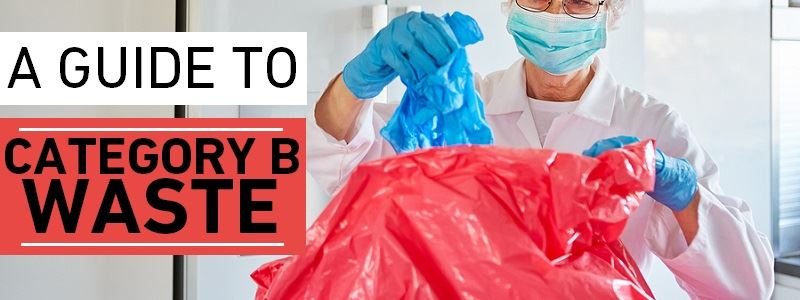What is Category B Waste?
Category B Waste comes under the “Biological Substances” classification and includes “diagnostic specimens” – this refers to human or animal materials that are being transported only for the purpose of diagnosis or investigation.
Materials that fall under Category B include excreta, blood (and its components), as well as other tissues and fluids.
However, the waste must be assigned differently if the source of the substance is known to have a disease that could be transmitted, and for which treatment and prevention measures are not readily available (Category A).
Moreover, live infected animals are not classed as diagnostic specimens under Category B.
Exceptions
Many rules apply to Category B specification. The following situations demonstrate where the waste would not fall under this category:
- The waste isn’t infectious and is unlikely to cause disease
- The waste contains non-pathogenic microorganisms
- The waste contains neutralised or inactive pathogens that no longer pose a health risk
- Environmental samples (e.g. food/water) that pose no risk of infection
- Dried blood spots, faecal occult blood screening tests and blood components collected for transfusion
- Tissues or organs intended for use in transplantation
- Human or animal specimens where there is minimal likelihood of pathogens (in leak-proof packaging labelled “Exempt human/animal specimen”)
In these cases, the waste must still be classified accordingly, but it would not immediately fall under Category B.
Packaging Requirements
The packaging should consist of the following three components:
- A leak-proof primary receptacle (or multiple receptacles if appropriate)
- A leak-proof secondary packaging
- Outer packaging of suitable strength for its capacity, mass and intended use (with at least one surface having minimum dimensions of 100mm × 100mm)
These components must be effective, undamaged and safe.
When packaging liquids, absorbent material (enough to absorb the entire contents) should be placed between the primary and secondary packaging. This is to ensure that no release of liquid can reach the outer packaging and compromise the packaging integrity.
If multiple fragile receptacles are being packaged together, they must be individually wrapped to prevent contact. Failing this, they should be separated.
Disposing of Category B Waste
When it comes to disposal, medical waste but be dealt with by a licensed waste carrier. We’re waste experts at Direct365, and we’ll provide a comprehensive Waste Management service tailored to your business’s needs.
Visit our clinical waste page here or fill out a query form at the bottom of this page for a free, no-obligation quote.
Remember: it’s important for specialist waste to be assigned to a category so that it can follow the right transportation guidelines. Elements of professional judgement based on medical knowledge and understanding of local legislature will be helpful to any business decisions determining how to classify waste.
For more reliable information on infectious waste regulations, read the HSE guidelines here.

